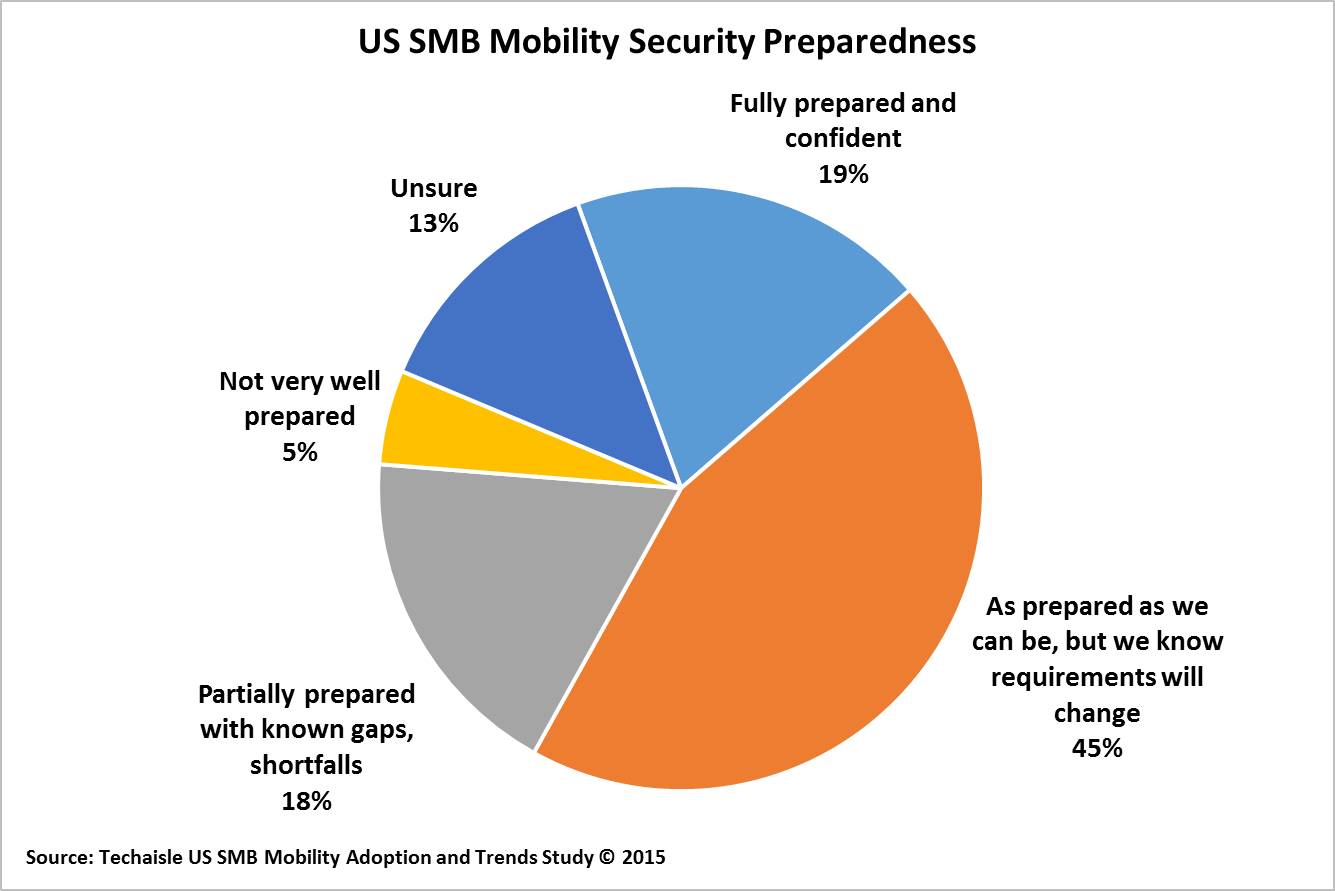The US SMB IT channel partner has reached an inflection point. Faced with an expanded SMB buyer community and requirements for specialized skills to support different solutions, the SMB channel partner is beginning to segment by focus area. Although different specialties are starting from a common point today, Techaisle expects to see each develop unique characteristics over the next several years.
Highlights from Techaisle’s The State of US SMB Cloud Channel report include:
The business of the SMB channel: migrating to specializations including (and/or based on) cloud
- There is a reasonable balance between product and services revenue and engagements
- Execution, not time allocation, is key to sales success
- While different channel delivery models (MSP, VAR, SP, IT consultant, SI) have different characteristics, they share an emphasis on small businesses as a key buyer segment
- Sales cycles vary with several factors, including solution expertise
- Cloud builder, cloud reseller and cloud provider approaches to building cloud practices within channel businesses all address common customer needs, but have unique challenges
- Channel conflict in the cloud is currently at a dangerously high level
- Lead generation relies on multiple sources, including referrals from customers, vendors, distributors and other channel members
Vendor positioning: breadth of channel requirements will strain available program resources
- Channels are likely to position themselves as best-of-breed suppliers, but both best-of-breed and single-vendor approaches carry risk
- Channels look primarily for vendor business stability and end-to-end solutions, but there are no suppliers perfectly equipped to meet these needs
- At a high level, channel members are looking for product training, pre- and post-sales technical support and effective incentive programs
- Cloud channel requirements are much more diffused. Various forms of technical support are essential, as are selected forms of enablement, economic and offering/portfolio support
- Vendor websites are the primary means of conveying marketing messages to the channel, but again, portfolio requirements are extensive and complex
Working with the SMB Cloud customer: the SMB channel struggles to keep pace with evolving SMB market demand
- Over 60% of channel members offer cloud solutions to SMBs today, and that proportion is likely to rise to nearly 80%; 62% of those who are offering cloud solutions expect increased revenue from these offerings in 2015
- Across the major cloud delivery models, channel support is strongest for SaaS, but it is also substantial for IaaS, PaaS and communications as a service (CaaS)
- The channel is actively supporting cloud storage and other capabilities (such as security and content delivery) that take advantage of inherent advantages of cloud. In many cases, support for common business application workloads also tops 50%
- The channel is progressing in its efforts to establish “truly consultative” relationships with SMB customers, and these relationships are positively correlated with cloud success
- The SMB channel is opting primarily for self-branded cloud solutions (supported either internally or by vendor partners), but there are benefits and risks to channel-branded and vendor-branded offerings, and channel or vendor-supplied support
- The key challenges to building cloud practices within channel businesses are primarily internal; market-based objections are falling away as SMBs embrace cloud as an IT service delivery platform
The SMB buy-side/business perspective: a tale of opportunity and limitations
- Cloud addresses important and clearly-defined SMB business and IT issues. As a result, demand for cloud will continue to be strong for years to come
- Cloud has more of a mixed impact within channel businesses: it creates major challenges in some cases, and addresses channel business issues in others. Channel businesses need to capitalize on opportunities while mitigating areas of exposure or uncertainty
- Hybrid on/off-premise infrastructure is a reality in the SMB market. Channel firms that can effectively integrate traditional and cloud environments are well positioned for success
- Technical expertise is an important attribute, but strong customer relationships rely primarily on working with customers over the long term, and understanding their industry requirements and business needs
Each of the topics is covered in depth in the report. What emerges is a portrait of a market that offers tremendous opportunity for SMB channel partners that are able to build and invest in a cloud strategy, but one that is marked by tremendous challenges for channel organizations that lack the will or capacity to adjust to a changing SMB business environment.
Similar state of SMB channel reports are being analyzed for mobility, managed services and virtualization.















